Worth More Dead and Other True Cases Read online
Page 17
Wally Ersker took to watching Pitre’s rental house to see if there was any strange activity over there. “About 3:00 PM on March 21,” he told Oakley, “I saw Roland Pitre breaking out the passenger side wing window on a maroon van. Then he swept all the broken glass from the sidewalk.”
Two hours later, as he listened on his walkie-talkies, Ersker heard a man named Bud start making collect phone calls to Roland. The calls were coming from the King County Jail. “This Bud guy was saying something about Roland taking the van and putting it on the Seattle–Bremerton ferry, and then Bud would have somebody pick it up and take it to Darrington, Washington, and hide it.”
Bud talked about a woman named Bobbi and said that a woman named Beth could use her car. The man calling from jail also asked if he was going to make any kind of profit for helping Roland. “He asked about jewelry, gold, rifles or handguns, or anything that Roland would give to him. Roland said he could get Tim’s school ring and give him that.”
It appeared to Ersker that something big was going down on the third Sunday in March because the calls were coming closer together. Bud’s next collect call to Pitre came in about 7:15 PM. This time, it was a female who accepted the call, but it wasn’t the woman Ersker had come to recognize as Beth. There had been another call from the county jail at 8:10 PM. The woman next door laughed as she told Bud that Roland was showing off his “fashions in basic black.”
He heard a male voice warn, “Don’t say nothing to her what’s happening.”
Without Beth Bixler’s confession, the myriad phone calls that Wally Ersker reported wouldn’t have made much sense. But her details made it all clear. Bud Halser was, of course, Roland’s friend who was to have been the co-kidnapper of Tim Nash. But Bud was stuck in jail in Seattle, so Beth had to help kidnap Tim. She had told Doug Wright that she had never met Bud but had talked to him on the phone on three occasions. She also heard Roland planning the crime with him during their phone calls.
Roland told her about a three-way call among himself, Bud, and Bud’s girlfriend, Bobbi. On the night of the kidnapping, Bobbi would be at Roland’s house, babysitting the 5-year-old André and also accepting collect calls from Bud. If anyone checked, phone records would prove that someone at Roland’s house—presumably Roland himself—had accepted collect calls at the exact time Tim was being kidnapped. That was to be Roland’s alibi.
“Roland told me that he and Bud had been planning for two and a half years to kidnap Tim,” Beth told Wright. “He said that they stole the safe as the first part of that plan. That was just to set up Tim.”
The van they used in the abortive kidnapping belonged to Beth. It was a year-old Chevy, and she was months behind in the payments. Bobbi, Bud’s girlfriend, was supposed to drive it away after they locked Tim up in Beth’s basement. But Bobbi lost her nerve, so, Beth said, she and Roland drove it up to Snohomish County, north of Seattle. With the wing window broken out, it would be easy for someone to steal it. It was probable that Pitre would then advise Beth to make an insurance claim so that her van would be paid off. She might even realize some profit.
On May 1, 1993, Bud Halser was charged with Willful Destruction of Insured Property. On June 15, his indictment was amended to include Conspiracy to Commit Kidnapping in the First Degree. Halser, always before a willing participant in Roland Pitre’s schemes and his longtime close friend, no longer wanted to be associated with him. Through his lawyer, Halser petitioned to have the charges against him completely severed from any courtroom proceedings involving Pitre. Obviously, he had not participated in person in the clumsy kidnapping of Tim Nash; he was locked up tight in the King County Jail. As far as the theft of the Pitre family safe, Halser insisted that he was simply helping his good friend move a heavy item, much as any friend would help someone move. He said he had no idea the safe was stolen.
Roland was in a much more tenuous position than Bud. On September 9, 1993, faced with the multitudinous physical evidence and eyewitness testimony against him, Roland Pitre, who appeared to be fully restored to sanity, entered Alford Pleas to several charges against him before Judge Karlynn Haberly of the Kitsap County Superior Court. He was not admitting guilt: the Alford Plea mean that he was neither admitting nor denying guilt but that he believed he would be found guilty if his case went to trial.
There were indeed many charges against him, and Chris Casad, the prosecutor, intended to ask for exceptional sentences for each of them. Given Pitre’s record and that he had taken advantage of the very people who should have had reason to trust him—his own family—made his alleged crimes particularly egregious.
Still feeling confident, Roland Pitre took the Alford Plea in Count I: First Degree Burglary; Count II: Conspiracy to Commit First Degree Kidnapping and to further charges, many evolving from the theft of the family’s safe and its contents: Willful Destruction of Insured Property and Theft in the First Degree.
Sentencing would come later. In the meantime, Roland moved ahead to add luster to his reputation as a loving and caring man. Tears welled up in his eyes as he spoke about Cheryl Pitre’s murder to a presentence investigator, a twenty-three-year veteran of the Flint Police Department in Michigan. The investigator had been a detective sergeant before he retired to do private work. He had had ample opportunity over the years to study human nature. He found Roland Pitre an interesting challenge.
Roland said he felt he was being singled out and punished again because people suspected that he had killed his first wife. And that simply wasn’t true. “I didn’t kill her,” he sobbed. “I knew when she was murdered that I would be blamed for it. There’s a time in a person’s life when things like that can happen, and everything just goes downhill from then on. I knew I’d never get my nursing license after she died. I’ve never been able to recover from that or clear myself.”
Even though he had semi-confessed to the current charges and was awaiting sentencing, Roland continued to try to improve his image by doing his own PR. He readily agreed to speak with a reporter for the Independent, Port Orchard’s newspaper.
He had to share the front page with Beth Bixler, but Roland got more coverage. Beth helped the detectives after her first obviously false story of Tim’s kidnapping, and she was prepared to testify against him if he had gone to trial.
Because she had no prior record and because the investigators and the judge believed she was telling the truth, Beth had been sentenced to only four years in prison. With “good time,” she could hope to be back with her three children sooner than that.
Beth had lost her marriage, come close to bankruptcy, and was no longer a member in good standing of the Church of Abundant Life because of her obsession with Roland, but at least the Court gave her a break in her sentence.
“She was not the primary motivator behind the crime,” Chris Casad told a staff writer, Verina Palmer. “It was obviously thought up by Pitre.”
Roland Pitre, speaking in the Kitsap County Jail, told Verina Palmer that he was horrified at the prospect of receiving a twelve-year sentence, the exceptional sentence sought by the prosecutors Casad and Moran. That was unthinkable to a man who cried as he spoke of how much he truly loved his family.
Roland persisted in his version of what he considered a noncrime. He said that he saw himself as a hero, as only a simple man who tried his best to preserve his family. He had always been their protector, and he desperately needed to show them how very vulnerable they were without him.
To be sure they were all protected, Roland related that he often parked nearby and stared at their house, sometimes spending all night, his eyes burning from lack of sleep as he watched over them. He had to find some way to prove to Della that she needed him to come home. He had even fantasized about different ways he could rush into the house at just the right moment when they were having a problem or even foil a crime in progress. If a rapist or a voyeur threatened his vulnerable family, he would be the shining knight there to save them.
“I didn’t even have any ce
rtain crime I was saving my family from; I would just fantasize being there for the emergency, being there when I was needed.”
Maybe he felt this way because he hadn’t been able to save Cheryl, he said. “I’ve always felt totally responsible for Cheryl Pitre’s death. I feel that if we had not divorced she’d still be alive. I suppose I’ll feel that way ad infinitum. The guilt is overbearing [sic].”
Roland said he probably deserved to go to prison for the unsuccessful kidnapping of Tim, but he didn’t feel it should be for the twelve years that might lie ahead. “I was just trying to get back in my house to be part of a family.”
Roland made sure that the Independent’s reporter saw the results of a private polygraph he had taken on September 11.
John L. Ketchum administered the lie detector test to Roland, hooking him up to the usual leads: blood pressure, galvanic skin response, respiration, heart rate, pulse.
Pitre’s attorney conferred with Ketchum. They chose thirty-five questions, going back to 1980 when Lieutenant Commander Dennis Archer was murdered in Oak Harbor. Ketchum asked the questions and watched the pens on the polygraph move along the chart.
Q. Were you at your apartment with Maria Archer while Steven Guidry shot and killed Dennis Archer in the Archer home?
A. Yes.
Q. Did you and Steven Guidry conspire to kill Dennis Archer?
A. Yes.
Q. Did Maria Archer ask you to kill or have Dennis Archer killed?
A. No.
To questions about whether he had known about Dennis Archer’s insurance policies, Pitre answered no. He also denied that he bought insurance on Bébé’s life when she was a toddler for any reason other than because he was preparing for a custody battle with Cheryl.
Q. Was the last time you saw Cheryl Pitre on Sunday, October 9, 1988?
A. Yes.
Q. Did you leave your home on the morning of October 16, 1988, to purchase The Tacoma News Tribune and gasoline for your car?
A. Yes.
Q. Did you meet with anyone on the morning of October 16, 1988?
A. No.
Q. On the previous night—October 15, 1988—did your stepdaughter’s conversation with Della delay your going to bed?
A. Yes.
It seemed odd that Ketchum did not ask if Roland killed Cheryl. Rather, he moved on quickly to queries about Beth Bixler.
Q. After your refusal to kill Duane Bixler, did Beth Bixler then offer that you and she could share in Duane Bixler’s $200,000 life insurance?
A. Yes.
Q. Was your response…also no?
A. Yes.
The polygrapher asked Roland if Beth had told him she was romantically and sexually involved with a man other than her husband. He answered Yes.
Q. Did Beth Bixler approach you to have her van stolen for a sum of money to be given to her?
A. Yes.
The lie detector test ordered by Roland’s defense lawyer resulted in Ketchum’s belief that the subject had replied truthfully. At least, his physiological responses indicated no deception. There were several ways to react to these startling results. One was that Roland Pitre was an honest man, wrongly accused. Another was that the questions asked of him were carefully crafted to avoid those that would evoke the strongest response.
It was also possible that Pitre was a human completely without conscience, one who felt no guilt and no remorse. Without those emotions or any real apprehension about punishment, antisocial personalities often pass lie detector tests. Polygraphs are not foolproof; they depend upon the person who administers them, the emotional state of the subject, possible personality disorders in the subject, and a number of other factors. Unless both the prosecution and defense agree, lie-detector results are not admissible in a trial for those very reasons.
Verina Palmer wrote down what Roland told her. He seemed sure that those who read his version of the story would see that he was a much maligned innocent man and that the judge would feel the same way. Hadn’t he proved that with his lie-detector results?
He had not.
21
In December 1993, Roland Pitre was to appear for sentencing for First Degree Burglary, Conspiracy to Commit First Degree Kidnapping, Willful Destruction of Insured Property, and First Degree Theft.
Chris Casad stated his reasons for believing that Pitre deserved an exceptional sentence. There were six factors to consider: abuse of trust; sophistication and planning; deliberate mental cruelty; lack of remorse; an especially culpable mental state; and, Casad stated, that Pitre’s crimes were more “egregious and onerous” than typical crimes in the four classifications.
While it is difficult to say what makes a crime typical, it is true that most criminals don’t confine their nefarious plots almost entirely to members of their own families. Roland Pitre had been a flimflam man to get relatively small amounts of money from strangers, colleges, and government agencies but his master plans involved his wives, children, and mistresses. He appeared to have loyalty to no one except himself and concern for only his own wants and needs.
Casad felt it was appropriate to impose a sentence of fifty years in prison and an additional five years of postrelease supervision.
On December 17, 1993, Judge Haberly sentenced Roland Pitre to 240 months in prison (with credit for 268 days already served in the Kitsap County Jail) on Count I and 120 months (with credit for the 268 days) on Count II. It was less than Chris Casad had asked for but far more than Steve Sherman, the defense counsel, felt was called for. Roland Pitre had been afraid of getting twelve years in prison; now he faced more than twenty-five years of captivity. He was 41 years old, and would be 65 or more when he was paroled.
Pitre was also ordered never to have contact with his wife and children.
The prisoner’s immediate family picked up the frayed strands of their lives, although the emotional damage they suffered would never really go away. They moved on, some of them changing their names (Living in constant fear leaves victims with a programmed panic reaction.)
And with it all, Cheryl Pitre’s murder was still a cold case. Despite the genuine suspicions of dozens of investigators, they were still unable to link her ex-husband to the terrible beating that ended her life.
Years passed. Cheryl’s children grew up, but they never forgot their mother, and their overwhelming need to bring her some measure of justice didn’t go away.
22
2003
In the decade since Roland Pitre’s conviction in 1993, forensic science leapt ahead with remarkable techniques. Police departments across America established “Cold Case Squads.” The Seattle Police Department was one of them. Gregg Mixsell and Richard Gagnon were the first Seattle homicide detectives assigned to read through cases that had gone unsolved for many years. Although Cheryl Pitre’s life was centered in Bremerton and Port Orchard and most investigators had concluded that she probably died there, her body was found in Seattle proper. By 2003, cold case squads utilizing DNA matches were closing unsolved cases in mounting numbers. Mixsell and Gagnon had solved a dozen cold cases, and they continued to move forward, mowing them down one by one.
Hank Gruber, Rudy Sutlovich, and their sergeant, Joe Sanford, had retired from the Seattle Police Department by late 2003, although they never forgot the Pitre case. Kitsap County detectives Doug Wright and Jim Harris had also retired. Cheryl’s murder lingered in their minds, too, as unfinished business. But it was more than that for all the detectives, uniformed officers, and criminalists who had worked Cheryl’s murder case; she had been a warm and loving woman, a young mother, a friend to dozens of people.
There is an unseen bond that links murder victims with the men and women who strive to find out exactly what happened to them and why. The investigators come to know the victims as well as—often better than—those who have known them in life. It is a heavy responsibility that doesn’t go away when a case is over, and an unsolved case is never over.
Hank Gruber, who now works in courthouse
security, has always kept in close touch with his former colleagues in the Homicide Unit, and he was one of the first to learn from Gregg Mixsell and Richard Gagnon that there might be a revitalized probe into Cheryl Pitre’s murder, now fifteen years in the past.
He was elated, as were the other detectives who had hoped that this day would come.
There was someone who knew what had happened to Cheryl Pitre, someone other than the person or persons who had killed her. The knowledge had eaten away at his conscience for years, acid thoughts that disturbed his sleep and made him feel guilty, even though he had not participated in her death.
But he was in prison, and there are few more dangerous things to do while in prison than to tell other prisoners’ secrets. “Snitches” don’t last long in prison. They have unfortunate accidents or untimely deaths. Even those who do come forward lose some of their effectiveness because their identity has to be protected by the law enforcement agencies they contact. Not surprisingly, they rarely agree to testify in court.
Why do they come forward at all? Some prison informants do it because they have consciences. Some tell what they know out of the need for revenge; others hope they might get their own sentences shortened. A few of them are just natural-born tattletales and gossips.
Since Roland Pitre was well acquainted with the much shortened life spans of prison snitches, he may have assumed that no one on the wrong side of the bars would be a threat to him, especially since with his contrived charisma, he had always been popular in prison.
But there was at least one person who didn’t like him at all. The vast majority of inmates are serving sentences for crimes that haven’t physically hurt anyone. They have mothers and wives and children. They deplore sexual crimes and murder—particularly against female victims—just as much as anyone on the outside.

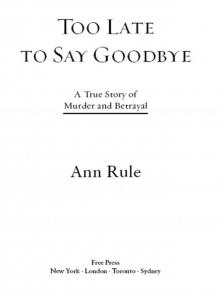 Too Late to Say Goodbye: A True Story of Murder and Betrayal
Too Late to Say Goodbye: A True Story of Murder and Betrayal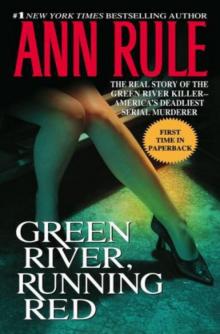 Green River, Running Red
Green River, Running Red Bitter Harvest
Bitter Harvest Dead by Sunset: Perfect Husband, Perfect Killer?
Dead by Sunset: Perfect Husband, Perfect Killer?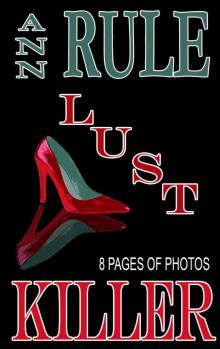 Lust Killer
Lust Killer And Never Let Her Go: Thomas Capano: The Deadly Seducer
And Never Let Her Go: Thomas Capano: The Deadly Seducer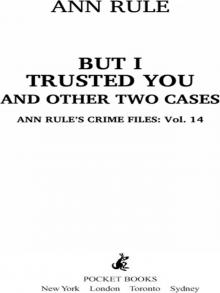 But I Trusted You and Other True Cases
But I Trusted You and Other True Cases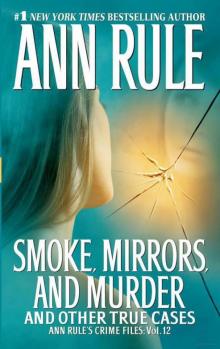 Smoke, Mirrors, and Murder and Other True Cases
Smoke, Mirrors, and Murder and Other True Cases If You Really Loved Me
If You Really Loved Me Kiss Me, Kill Me and Other True Cases
Kiss Me, Kill Me and Other True Cases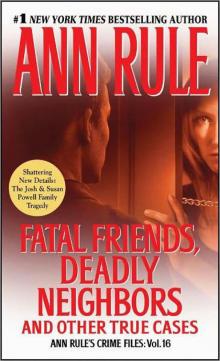 Fatal Friends, Deadly Neighbors and Other True Cases
Fatal Friends, Deadly Neighbors and Other True Cases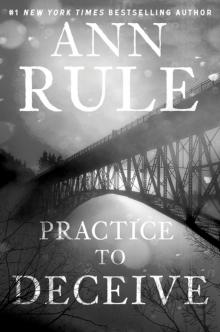 Practice to Deceive
Practice to Deceive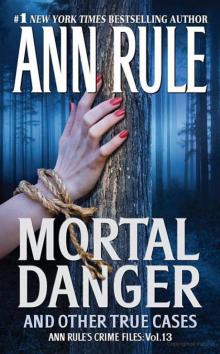 Mortal Danger and Other True Cases
Mortal Danger and Other True Cases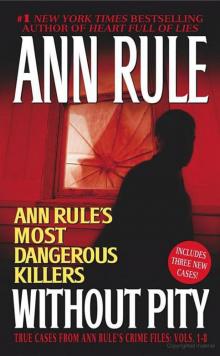 Without Pity: Ann Rule's Most Dangerous Killers
Without Pity: Ann Rule's Most Dangerous Killers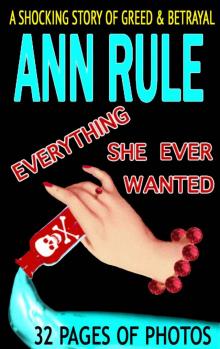 Everything She Ever Wanted
Everything She Ever Wanted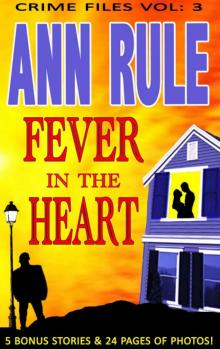 A Fever in the Heart and Other True Cases
A Fever in the Heart and Other True Cases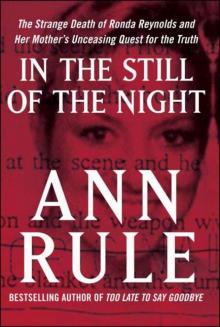 In the Still of the Night
In the Still of the Night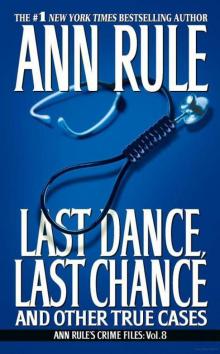 LAST DANCE, LAST CHANCE - and Other True Cases
LAST DANCE, LAST CHANCE - and Other True Cases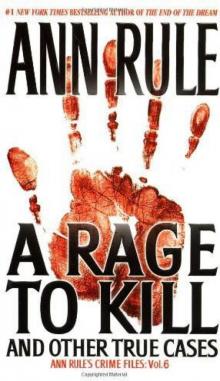 A Rage to Kill
A Rage to Kill The I-5 Killer
The I-5 Killer The Stranger Beside Me
The Stranger Beside Me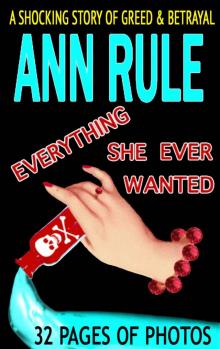 Everything She Ever Wanted: A True Story of Obsessive Love, Murder, and Betrayal
Everything She Ever Wanted: A True Story of Obsessive Love, Murder, and Betrayal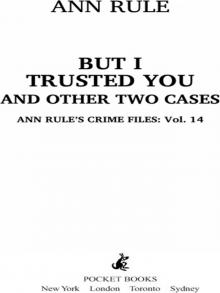 But I Trusted You
But I Trusted You Without Pity
Without Pity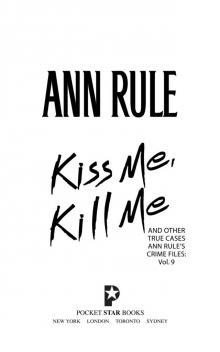 Kiss Me, Kill Me
Kiss Me, Kill Me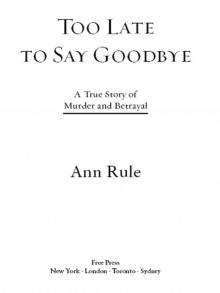 Too Late to Say Goodbye
Too Late to Say Goodbye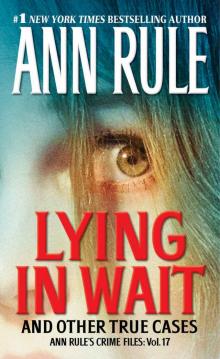 Lying in Wait
Lying in Wait Fatal Friends, Deadly Neighbors
Fatal Friends, Deadly Neighbors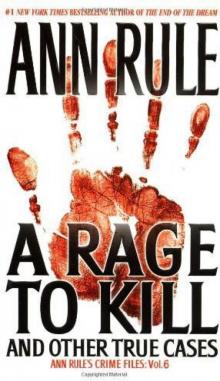 A Rage to Kill: And Other True Cases
A Rage to Kill: And Other True Cases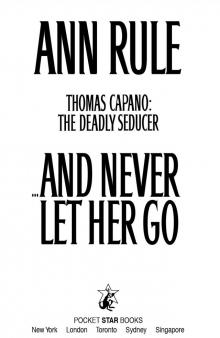 And Never Let Her Go
And Never Let Her Go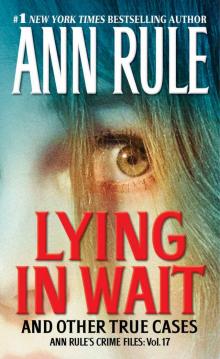 Lying in Wait Ann Rule's Crime Files Vol.17
Lying in Wait Ann Rule's Crime Files Vol.17 Blood Secrets: Chronicles of a Crime Scene Reconstructionist
Blood Secrets: Chronicles of a Crime Scene Reconstructionist No Regrets
No Regrets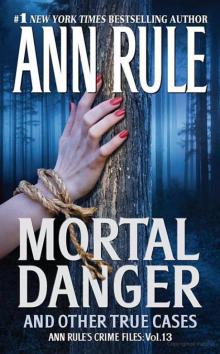 Mortal Danger
Mortal Danger But I Trusted You: Ann Rule's Crime Files #14
But I Trusted You: Ann Rule's Crime Files #14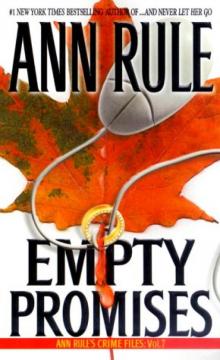 Empty Promises
Empty Promises Dead by Sunset
Dead by Sunset Last Dance, Last Chance
Last Dance, Last Chance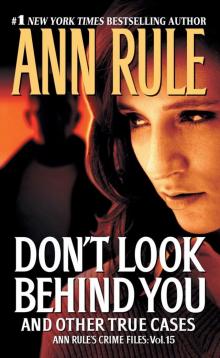 Don't Look Behind You
Don't Look Behind You